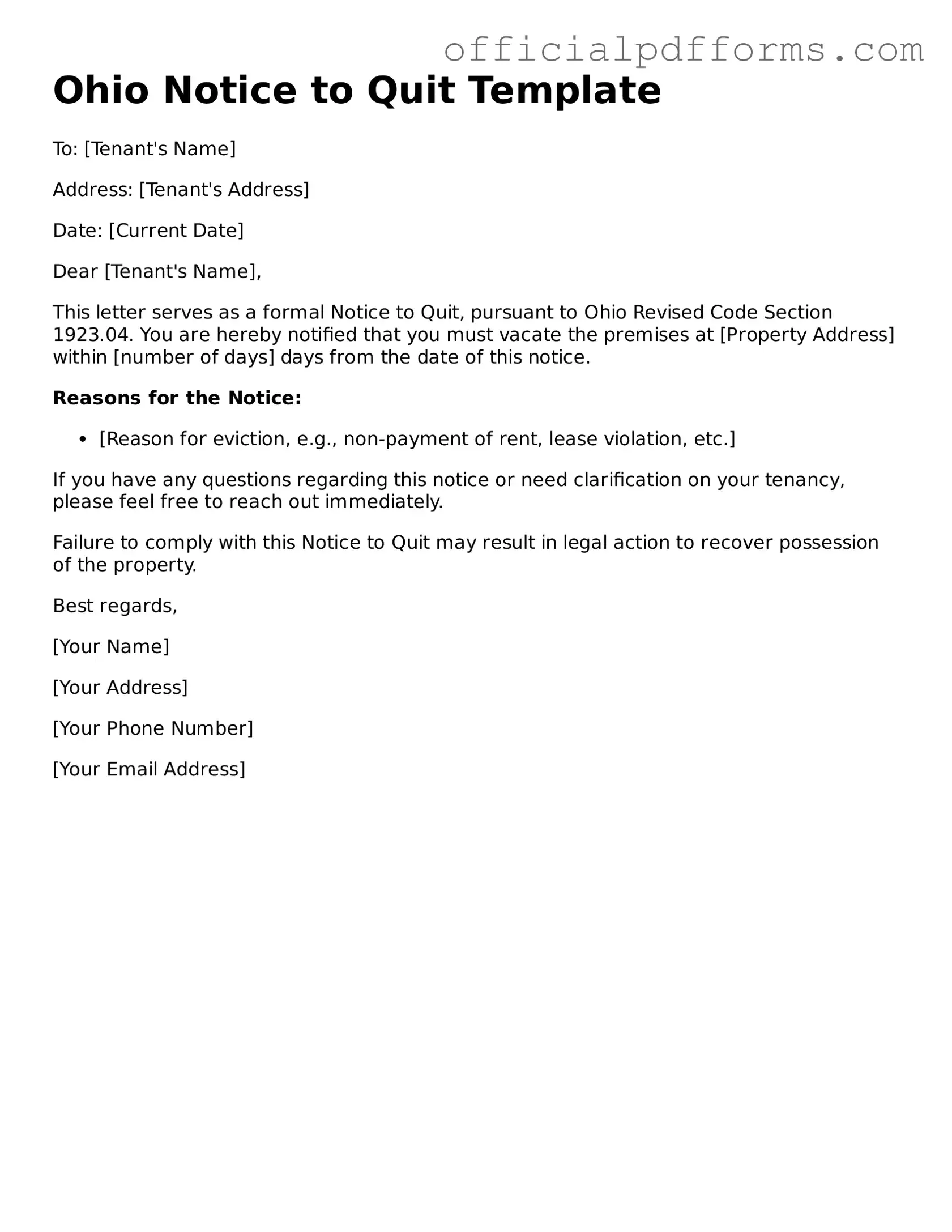The Ohio Notice to Quit form is a legal document that a landlord uses to notify a tenant that they must vacate the rental property. This notice is typically issued when a tenant has violated the lease agreement or has not paid rent. It serves as a formal request for the tenant to leave the premises within a specified timeframe.
When should a landlord use a Notice to Quit?
A landlord may use a Notice to Quit in several situations, including:
-
Non-payment of rent
-
Violation of lease terms
-
End of lease term without renewal
Each situation may require a different notice period, so it is important to understand the specific circumstances before issuing the form.
How long does a tenant have to respond to a Notice to Quit?
The response time for a tenant can vary based on the reason for the notice. Generally, for non-payment of rent, the tenant may have 3 to 30 days to respond or pay the owed rent, depending on the lease agreement and local laws. For lease violations, the notice may provide a specific timeframe to remedy the issue or vacate the property.
A Notice to Quit should include the following information:
-
The date of the notice
-
The tenant's name and address
-
The reason for the notice
-
The specific timeframe for the tenant to vacate
-
The landlord's contact information
Including these details helps ensure clarity and can prevent misunderstandings.
Can a tenant contest a Notice to Quit?
Yes, a tenant has the right to contest a Notice to Quit. If the tenant believes the notice is unjustified, they can communicate with the landlord to resolve the issue. If necessary, the tenant may also seek legal advice or representation to challenge the notice in court.
What happens if a tenant does not comply with the Notice to Quit?
If a tenant does not comply with the Notice to Quit, the landlord may proceed with legal action to evict the tenant. This typically involves filing an eviction lawsuit in the local court. It is important for landlords to follow the proper legal procedures to avoid complications.
Is a Notice to Quit the same as an eviction notice?
No, a Notice to Quit is not the same as an eviction notice. The Notice to Quit is a preliminary step that informs the tenant of the need to vacate. An eviction notice, on the other hand, is issued after the tenant fails to respond to the Notice to Quit and legal proceedings have begun.
Where can I find a template for an Ohio Notice to Quit?
Templates for an Ohio Notice to Quit can often be found online through legal websites or local government resources. It is advisable to ensure that any template used complies with Ohio laws and is tailored to the specific situation at hand.
